Forest Translation Prototypes / Prototipos traductores de bosques
Produced by Diputación de Granada y Santiago Morilla.
Augmented reality by Aran Art Network.
Computing and sensor electronics by Carles Gutiérrez.
Musical and robotic interactivity by Joaquín Díaz-Durán.
Scientific advisors: Matilde Barón (EEZ-CSIC) and Enrique Pérez (IAA-CSIC)
Music by Lucas Bolaño (Aran Art Network)
Video support by YAP (XOX)
︎
The "Forest Translation Prototypes" are techno-artistic installations designed to augment the information of all types of plant species by monitoring, sounding and visualizing 9 external environmental inputs and 3 internal reactions of the plants in real-time. At the moment the prototypes have been tested on a Buxus sempervirens, commonly known as boxwood (Prototype #1) and on a Ficus benjamina (Prototype #2), but the system design can be adapted to any plant or tree.
Augmented Reality technology enables human interaction with the plant data and its environment through an app interface, specially designed for this project. The data displayed on the interface are as follows (from top to bottom): the intensity of ambient light [1, white]; the amount of CO2 and organic volatiles in the air emitted by the plant [2 and 3, gray]; the humidity in the air and near the ground [4 and 6, light blue]; the temperature in the air and near the ground [5 and 7, red]; the temperature of the leaves [8, yellow], a value provided by a thermal camera that tells us if the plant is getting stressed or even has a fever; the pH value in soil [9, magenta]; and, finally, the humidity inside the soil [10, ultramarine blue]. In the central circle of the interface, the level of greenness reflected by the leaves [11, green], a value provided by a spectrometer, which indicates the chlorophyll function (calibrated according to the type of plant monitored), in other words, the health of the plant in relation to its ability to photosynthesize. Finally, on the right side of the interface, we find the ambient noise, also measured in real-time [12, gray].
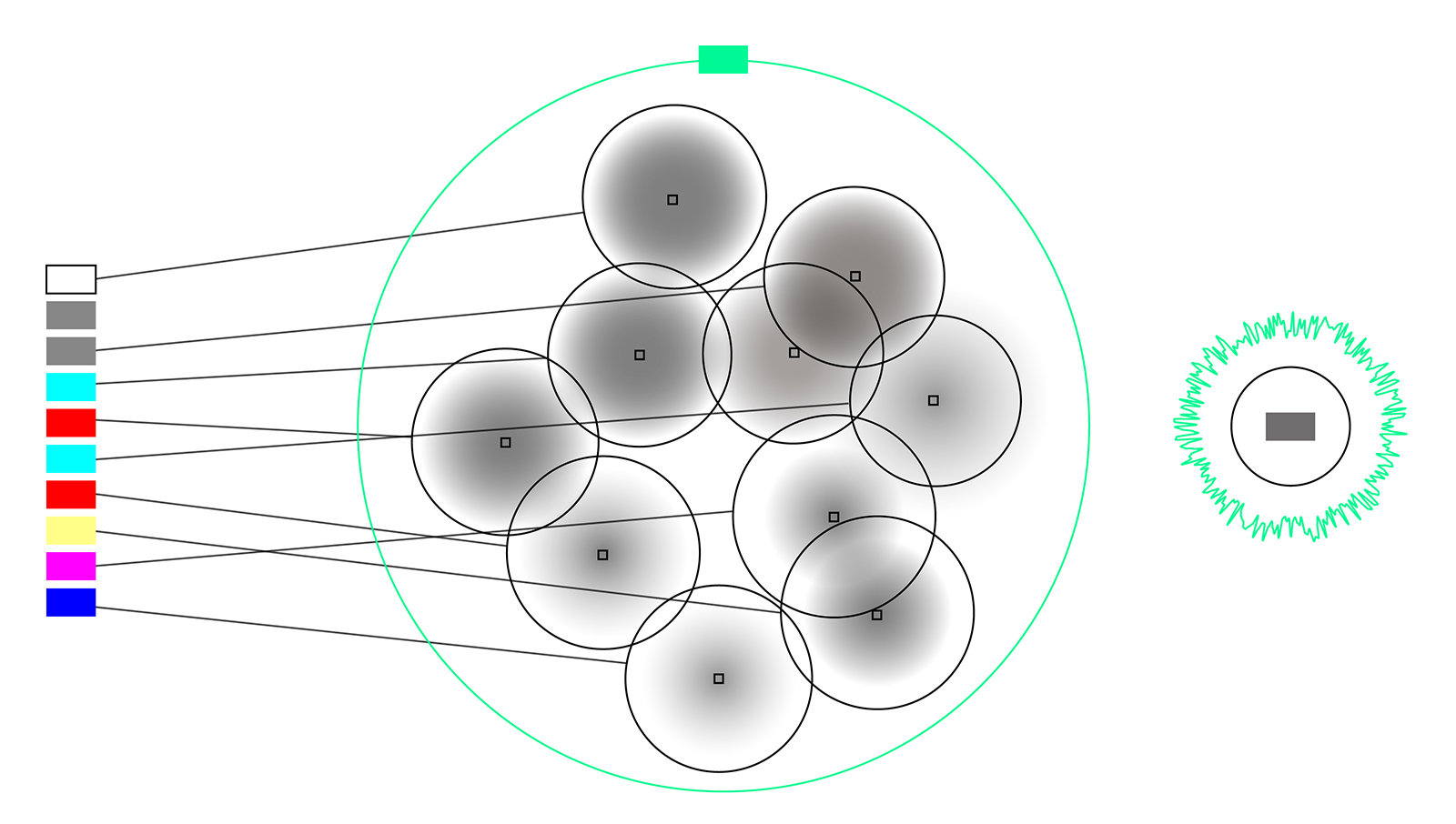
All sensor values are paired with sounds specially composed for the project which, in turn, are integrated into a generative soundscape. These sounds can be selectively turned on and off by clicking on the app interface. Through this simple protocol, we can gradually and intuitively associate images and sounds to the conditions that affect the plant, and its consequent internal reactions.
The dynamic of sound, visualization and interaction present in the "Forest Translation Prototypes" bring us a step closer to the understanding of our role within the environments shared between humans and non-humans.
Los “Prototipos traductores de bosques” son instalaciones tecnoartísticas creadas para el aumento informaciones de todo tipo de especies vegetales a través de la monitorización, sonorización y visualización de 9 estímulos ambientales externos y 3 reacciones internas, todo en tiempo real. Por ahora los prototipos han sido testados en un Buxus sempervirens, conocido comúnmente como boj (Prototipo #1) y en un Ficus benjamina (Prototipo #2), pero el diseño de sistema se adapta a cualquier planta o árbol.
La tecnología de Realidad Aumentada facilita la interacción del humano con los datos de la planta y su entorno a través de la interfaz de una app, especialmente diseñada para este proyecto. Los datos mostrados en la interfaz son los siguientes (de arriba a abajo): la intensidad de la luz ambiente [1, blanco]; la cantidad de CO2 y de volátiles orgánicos en el aire que emite la planta [2 y 3, gris]; la humedad en el aire y cerca de la tierra [4 y 6, azul claro]; la temperatura en el aire y cerca de la tierra [5 y 7, rojo]; la temperatura de las hojas [8, amarillo], valor facilitado por una cámara termal que nos indica si la planta se está estresando o, incluso, si tiene fiebre; el valor del pH en tierra [9, magenta]; y, por último, la humedad dentro de la tierra [10, azul ultramar). En el círculo central de la interfaz, el nivel de verdor reflejado por las hojas [11, verde], un valor facilitado por un espectrómetro, que nos señala de la función clorofílica (calibrada según sea la especie vegetal monitorizada), es decir, de la salud de la planta en relación a su capacidad para hacer la fotosíntesis. Por último, en la derecha de la interfaz, encontramos el ruido ambiental en sala, monitorizado también en tiempo real [12, gris].

Todos los valores de los sensores están asociados a unos sonidos especialmente compuestos para el proyecto que, a su vez, se integran en un paisaje sonoro generativo. Sonidos que se pueden apagar y encender selectivamente, clicando en la interfaz de la app. Mediante este sencillo protocolo, podemos asociar progresiva e intuitivamente imágenes y sonidos a las condiciones que afectan a la planta, y a sus consiguientes reacciones internas.
Las dinámicas de sonorización, visualización e interacción presentes en los “Prototipos traductores de bosques” nos acercan un poco más a la comprensión del papel que jugamos dentro de los entornos compartidos con humanos y no-humanos.
︎ 03/2021 © Santiago Morilla
︎ “Forest Translation Prototypes”, Single-channel Video Artwork (1:14)

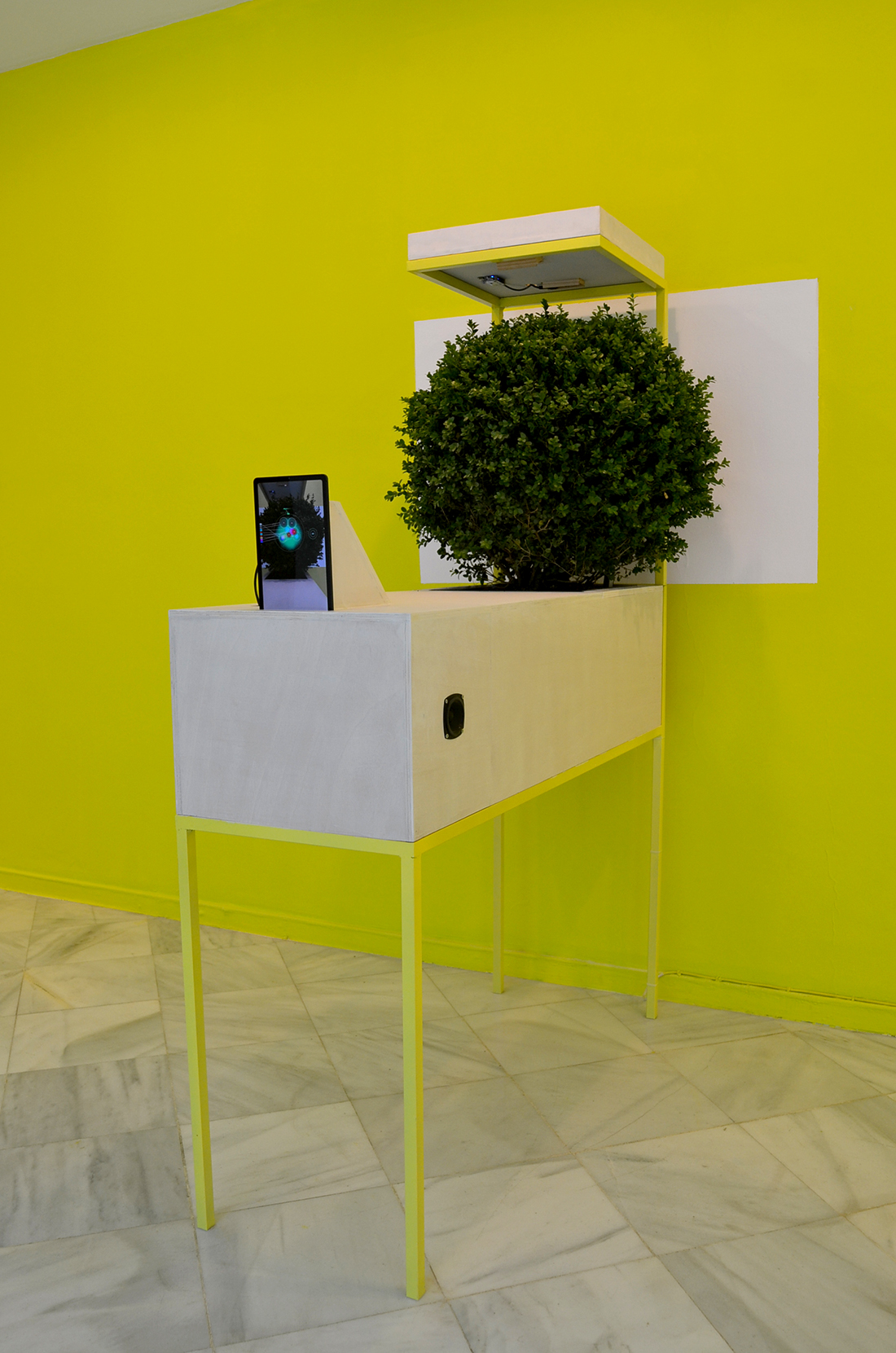


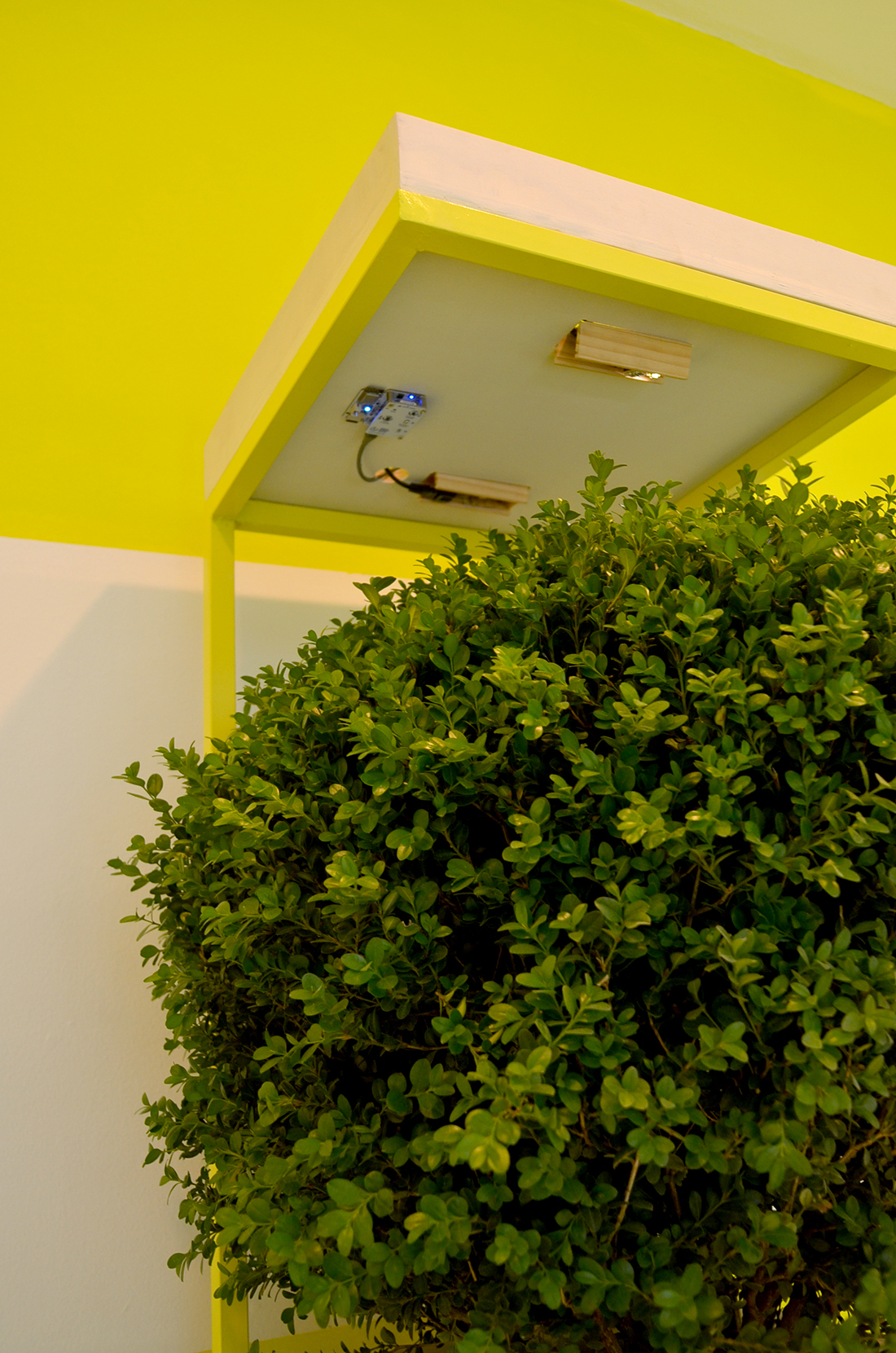
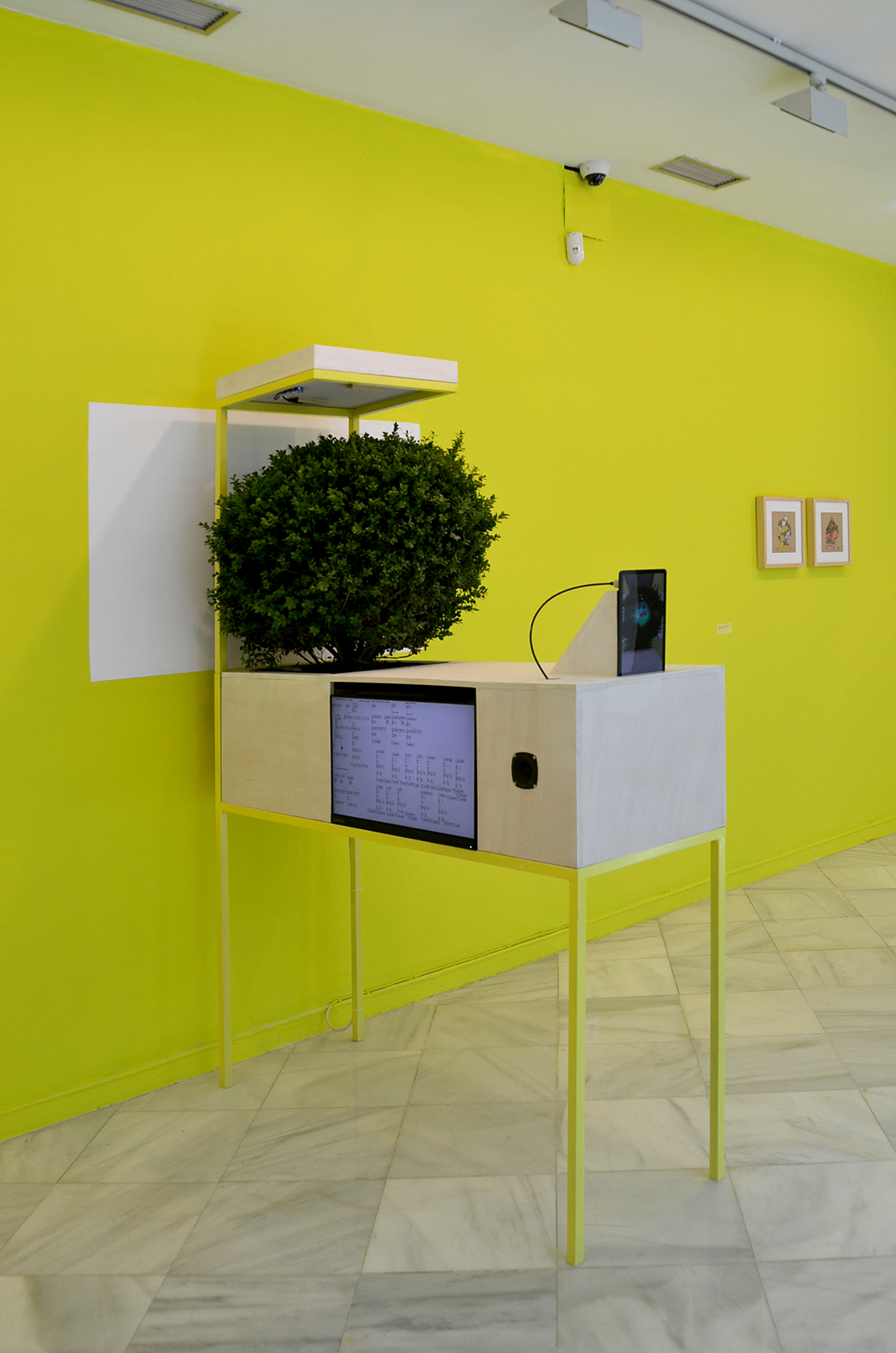


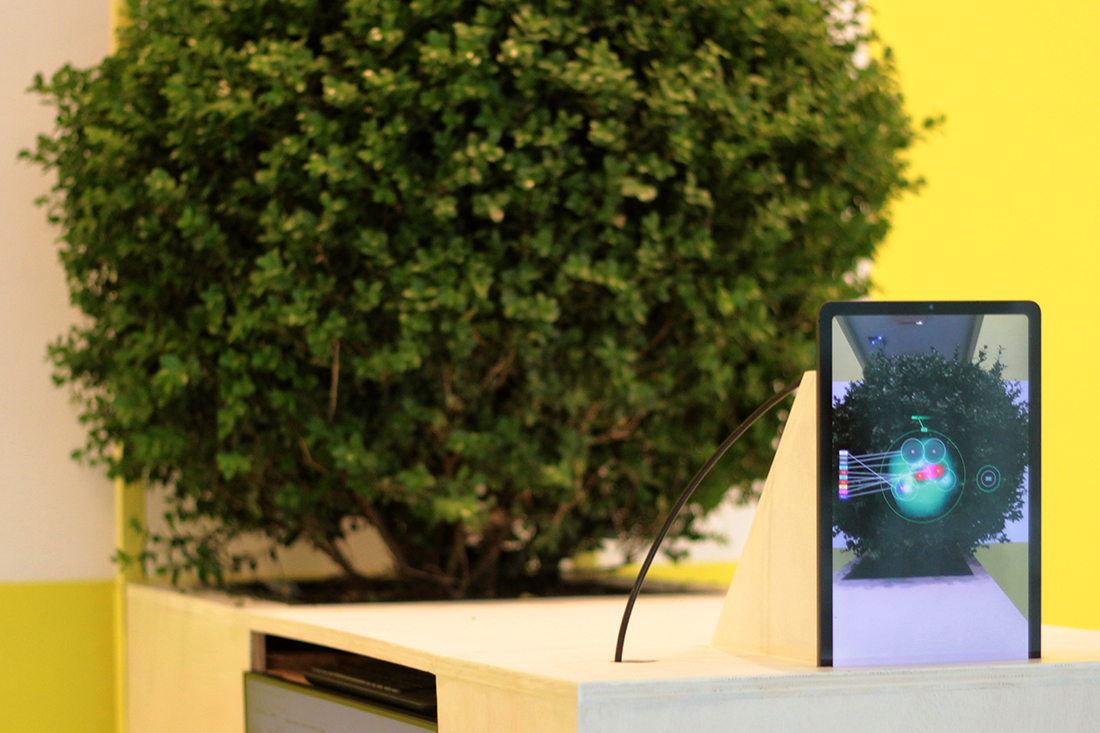
︎ “Forest Translator Prototype #1” in the solo exhibition TRADUCIR UN BOSQUE (26/03-20/06/2021), Palacio de los Condes de Gabia, Granada (Spain).
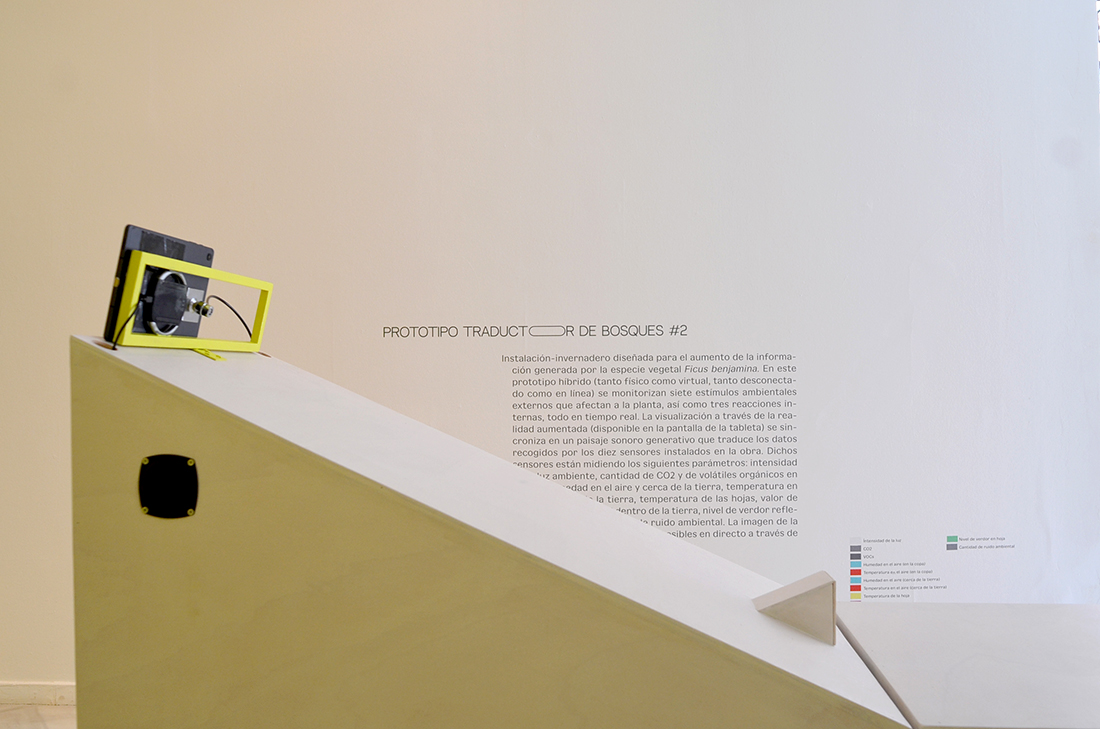

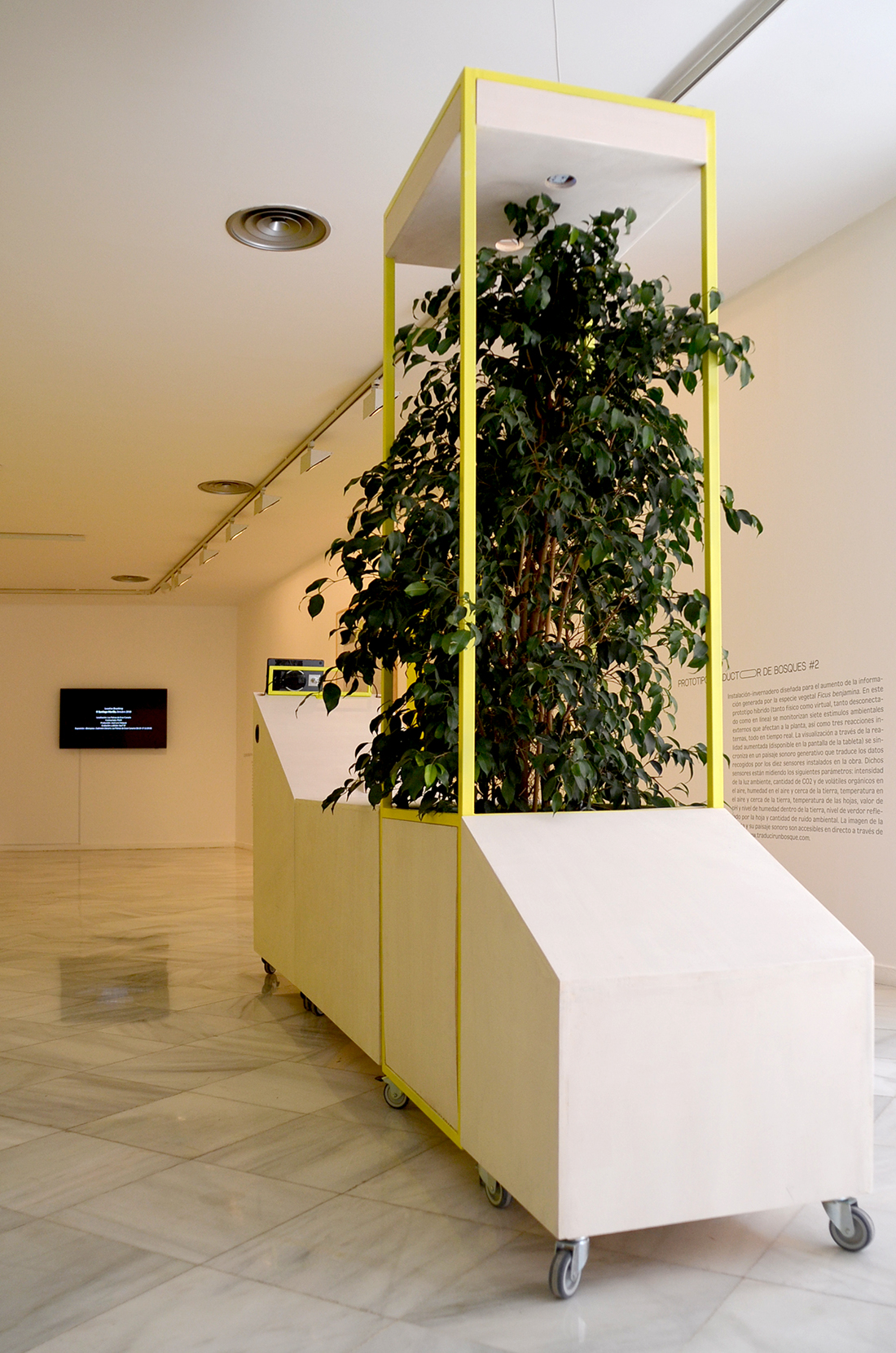

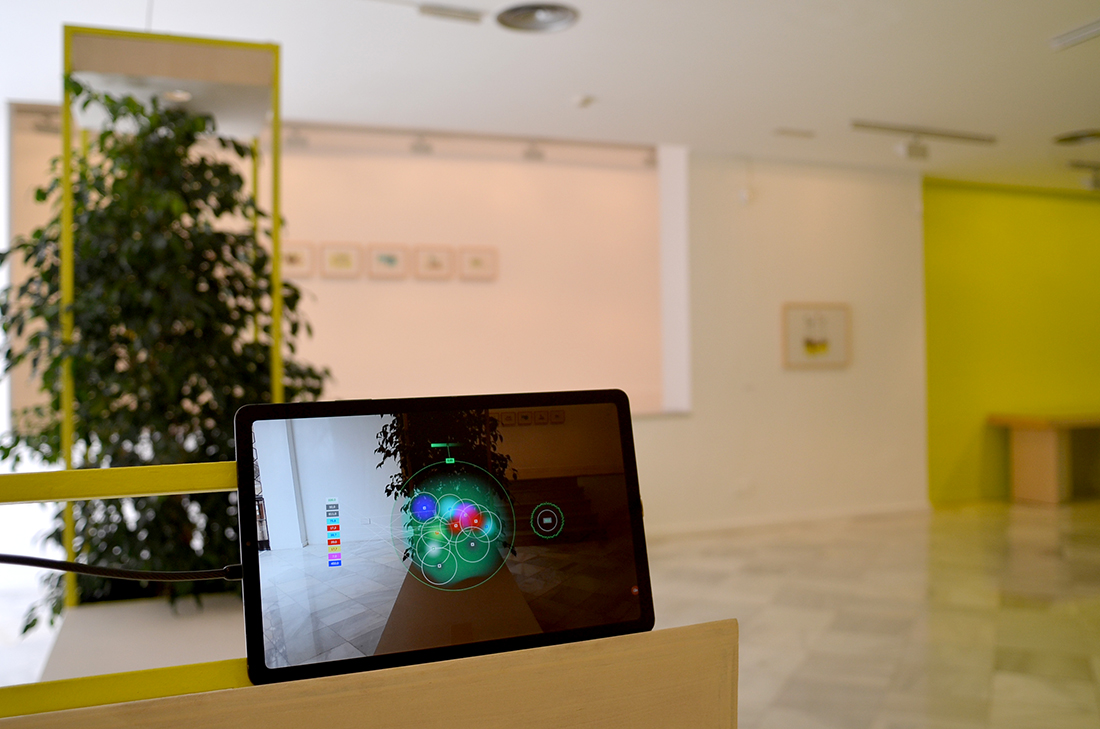
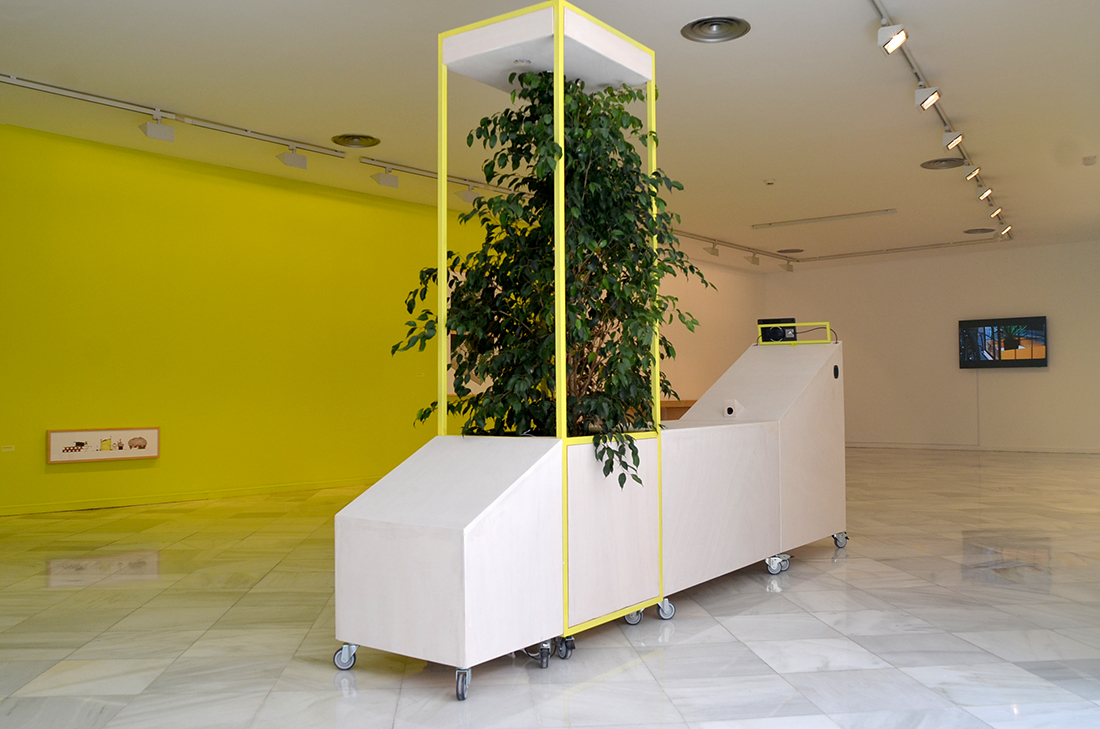
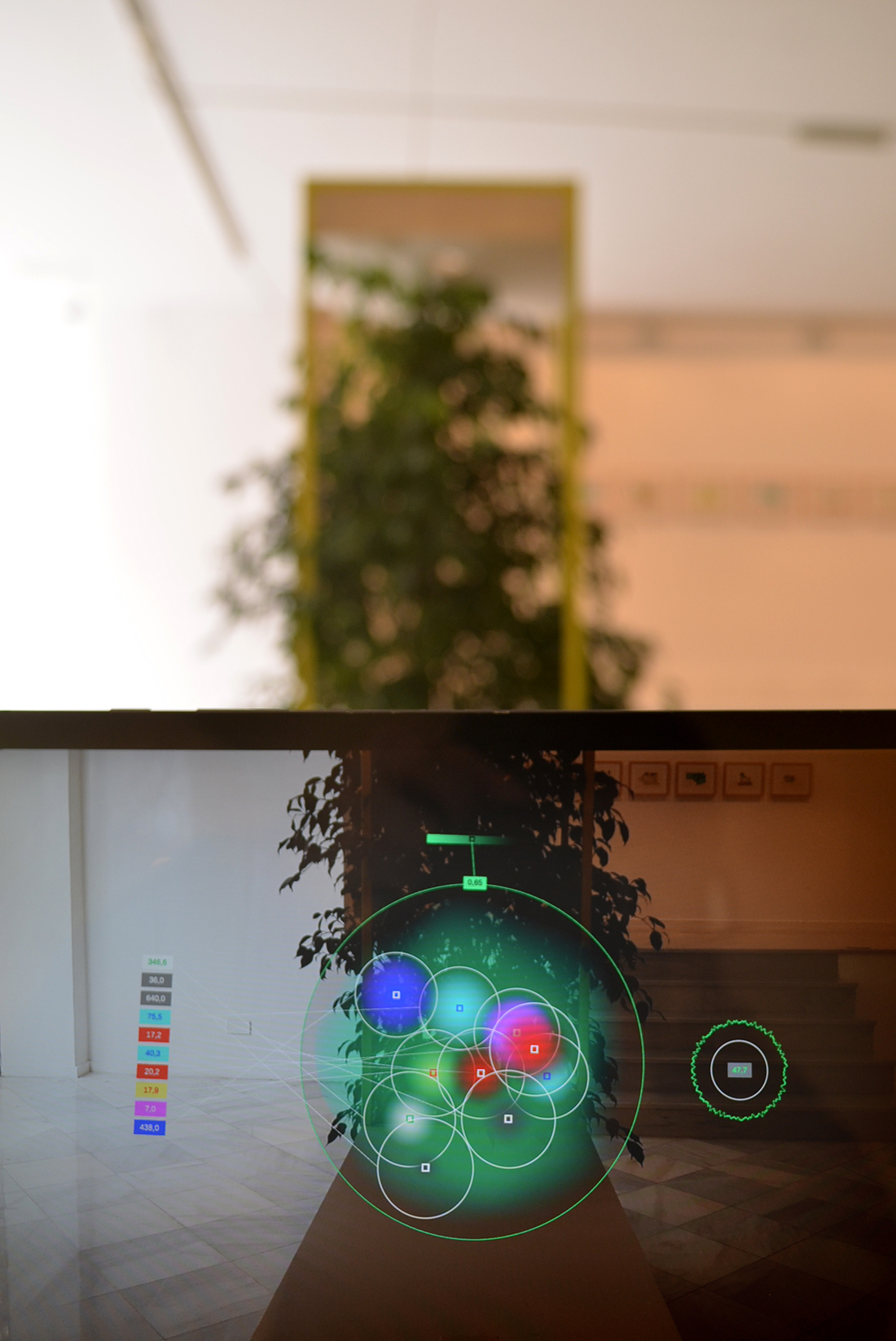
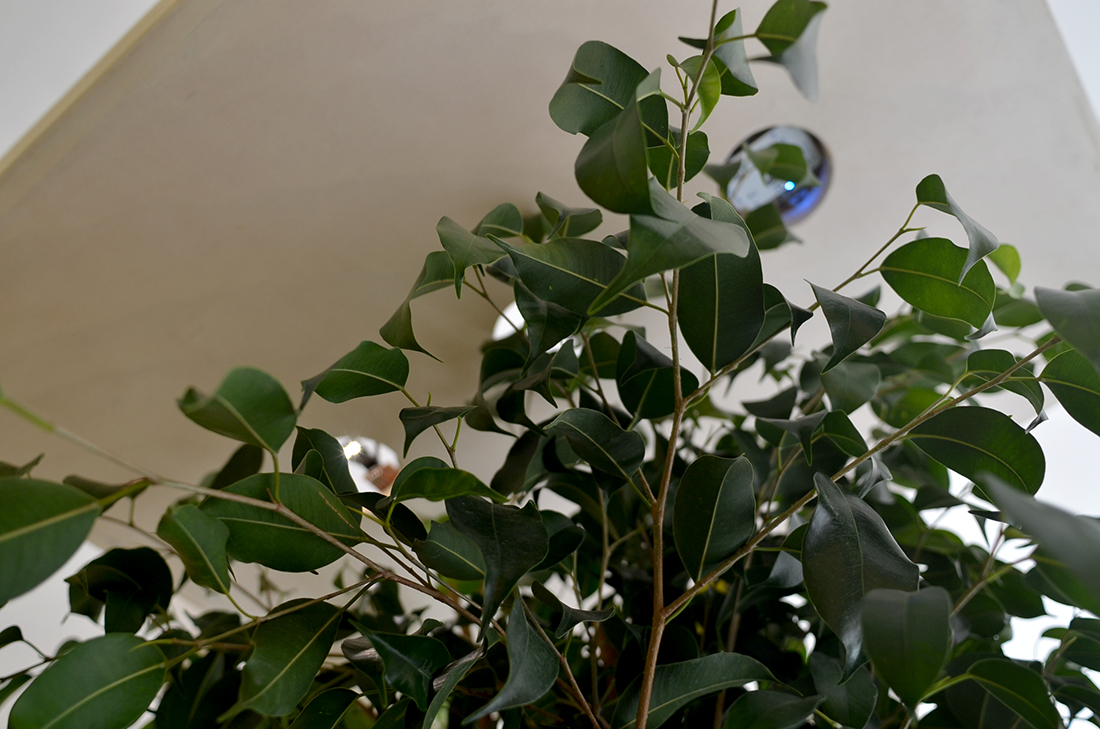
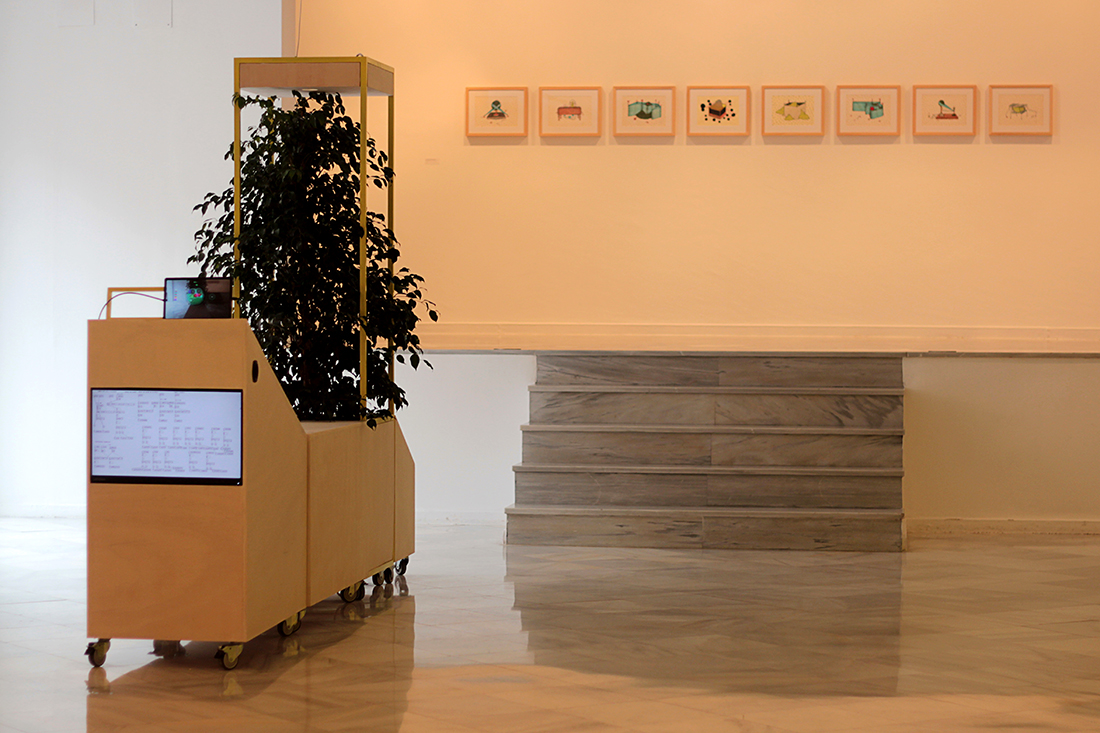

︎ “Forest Translation Prototype #2” in the solo exhibition TRADUCIR UN BOSQUE (26/03-20/06/2021), Palacio de los Condes de Gabia, Granada (Spain). Photos by Óscar Jiménez Gijón & Santiago Morilla.